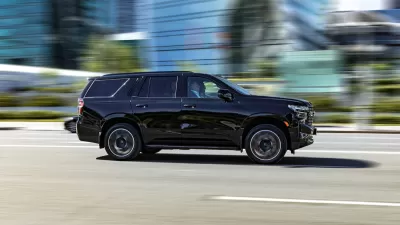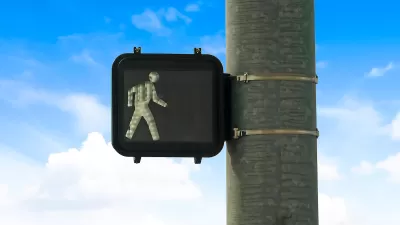Close to one fifth of pedestrian deaths in the United States happen on controlled-access freeways, suggesting a critical need for safety improvements on major roads.

“A surprising 17 percent of U.S. pedestrian deaths last year happened on roads where people theoretically should never be walking — and that troubling finding should prompt a conversation about why so many of them are doing it anyway,” writes Kea Wilson for Streetsblog. This data comes from an analysis by the Governors Highway Safety Association, which proposes that most pedestrians killed on freeways are stranded motorists, utility or construction workers, or first responders.
Research shows otherwise, writes Wilson. In fact, “a recent Insurance Institute for Highway Safety study found that just 18 percent of walkers killed on freeways between 2015 and 2017 were motorists whose vehicles had recently been disabled, and just 1 percent were road workers.” Most people killed on freeways were “people who chose to — or had no choice but to — walk on or near roads with vehicles traveling at speeds that will kill a walker nearly 100 percent of the time.”
“The question of why so many pedestrians are walking on roads that weren’t designed for them is hard to answer definitively, but experts say that their sheer prevalence of these deaths signals that they’re not just a horrifying anomaly.” The article cites the sheer prevalence of freeways in U.S. cities and the growing size of vehicles as two factors in rising death rates.
Jessica Cicchino of the IIHS says this signals a need for improved pedestrian infrastructure on or near freeways, many of which cut through urban neighborhoods indiscriminately, isolating residents from places they need to go. “That might look like installing pedestrian crossing bridges, overpasses, or underpasses at the site of frequent crashes, improving lighting along road shoulders to prevent the 48 percent of walking deaths that occur on unlit freeways after dark, or increasing access to transit so people on foot aren’t tempted to brave a dash across an interstate in the first place.
FULL STORY: Why Nearly A Fifth of Pedestrians Deaths Happen on Freeways — And How to Stop It

Planetizen Federal Action Tracker
A weekly monitor of how Trump’s orders and actions are impacting planners and planning in America.

Map: Where Senate Republicans Want to Sell Your Public Lands
For public land advocates, the Senate Republicans’ proposal to sell millions of acres of public land in the West is “the biggest fight of their careers.”

Restaurant Patios Were a Pandemic Win — Why Were They so Hard to Keep?
Social distancing requirements and changes in travel patterns prompted cities to pilot new uses for street and sidewalk space. Then it got complicated.

Platform Pilsner: Vancouver Transit Agency Releases... a Beer?
TransLink will receive a portion of every sale of the four-pack.

Toronto Weighs Cheaper Transit, Parking Hikes for Major Events
Special event rates would take effect during large festivals, sports games and concerts to ‘discourage driving, manage congestion and free up space for transit.”

Berlin to Consider Car-Free Zone Larger Than Manhattan
The area bound by the 22-mile Ringbahn would still allow 12 uses of a private automobile per year per person, and several other exemptions.
Urban Design for Planners 1: Software Tools
This six-course series explores essential urban design concepts using open source software and equips planners with the tools they need to participate fully in the urban design process.
Planning for Universal Design
Learn the tools for implementing Universal Design in planning regulations.
Heyer Gruel & Associates PA
JM Goldson LLC
Custer County Colorado
City of Camden Redevelopment Agency
City of Astoria
Transportation Research & Education Center (TREC) at Portland State University
Camden Redevelopment Agency
City of Claremont
Municipality of Princeton (NJ)





























